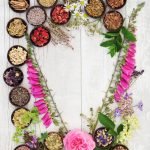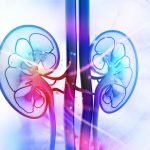Centella asiatica: An Herb for Treating Keloids
Jillian Stansbury, ND
Botanical Insights
The word keloid derives from “cheloid,” meaning claw-like. Keloids and other forms of extensive scarring occur due to excessive deposition of collagen and fibrin in the skin. Animal research suggests that keloid lesions are associated with inappropriate tumor growth factor-beta (TGF-β)-mediated signaling.1 TGF-β is a cytokine that affects the deposition of extracellular matrix proteins and can induce fibrosis when excessive. TGF-β is also implicated as a cause of chronic fibrotic conditions and is involved in many vital processes, including inflammation, fibroblast production, and normal wound healing. In the case of keloids, collagen and other structural proteins are excessively produced by fibroblasts, leading to excessive scarring, hardening of the skin, and in some cases, fibrosis of muscles and connective tissues. In many fibrotic situations, both excessive production and reduced catabolism of collagen occur in tandem.
Medical Therapy for Keloids
Keloids can occur in anyone, but are more common in people of color. While some keloids may spontaneously resolve over time, in most cases, keloids are persistent. Excisional and surgical methods are usually not effective due to high rates of further skin cell proliferation from such therapies. Corticosteroid injection, cryotherapy, chemotherapy, and radiotherapy have all been attempted for large lesions with variable results. Keloids and scarring that result from severe acne may respond to natural retinoids (instead of the more problematic tretinoin and isotretinoin),2 and these can be used along with the herbs suggested in this article.
Systemic Diseases Related to Keloids
There are several inherited diseases caused by mutations in genes coding for collagen, and these should be considered when keloids and scarring are particularly severe, affecting the muscles as well as the skin. In these autoimmune conditions, activated fibroblasts can transform into myofibroblasts and contribute to fibrotic changes in the muscles. These myopathies, such as Bethlem myopathy, are characterized by slow, progressive weakness of the proximal muscles, as normal wear and tear leads to contractures involving multiple joints.3 Peyronies disease is another condition sharing similarities with keloids, in which excessive TGF-β production contributes to progressive fibrosis. Men with this condition have dense plaques in the connective tissue of the penis due to an imbalance of fibrinolysis and fibrosis,4 and may benefit from some of the herbal therapies discussed in this article.
Herbal Therapies for Keloids
Anti-inflammatory herbs may be considered both orally and topically. While the use of herbal poultices may help reduce old, long-standing keloids, they are probably most effective when taken by mouth, as well as applied immediately following injury or surgical procedure. Curcuma longa (turmeric), for example, reduces excessive scarring and fibrous changes.5 Scutellaria bacialensis (Chinese skullcap) flavonoids baicalein and baicalin inhibit the production of eotaxin, a cytokine released from fibroblasts that promotes collagen deposition and eosinophilic migration,6 and may in this way reduce excessive scarring and keloids. Allium cepa (onion) has been noted to reduce keloids and hypertrophic scars in human trials when topically applied.7 Onions are high in quercetin and provide sulfur, an important nutrient for the extracellular matrix. Centella asiatica (gotu kola) is another excellent vulnerary herb to consider keeping on hand as a tincture, tea, and topical cream. Some of the research on Centella’s positive effects on wound healing are detailed here.
Centella asiatica and Tissue Repair
Centella asiatica is an Apiaceae family plant common in tropical and semi-tropical areas of Asia, South America, and the Middle East. It is known by the common names gotu kola and pennywort. This low-growing wetland plant has been used in Ayruvedic and traditional Chinese medicines to regenerate nerves, skin, and other tissues. Through its use as a medicine for at least 2000 years, it has earned the moniker “miracle elixir of life.” Centella has been used traditionally for wound healing and to treat a wide variety of skin conditions such as leprosy, lupus, varicose ulcers, eczema, and psoriasis.8 Centella is also considered to be a blood purifier and a mood and nervous tonic, use to improve memory and support longevity. It is an important herb used to revitalize the brain, recover from brain trauma, and regenerate nerves, and may improve emotional disorders associated with tissue degeneration by exerting neuroprotective effects via decreasing oxidative stress.9
Centella may also slow fibrotic transformation in various organs and tissues. For example, Centella may protect the liver from fibrotic damage by reducing levels of inflammatory mediators, including interleukins, tumor necrosis factor-α, interferon-γ and granulocyte macrophage colony-stimulating factor.10 TGF-β, as mentioned in the introduction, is also overexpressed in many fibrotic processes. Animal research suggests that Centella and its molecular constituents may help to rebalance TGF-β. Centella triterpenes have been found to protect against TGF-β-mediated renal fibrosis,11 and I therefore recommend this herb for the long-term treatment of chronic kidney disease and in patients with impaired renal function associated with aging, diabetes, and vascular inflammation. Due to its tissue regenerative, connective tissue supportive, and immunomodulatory actions, Centella is appropriate to include in treatment protocols for trauma and may help those prone to extensive scars and keloid formation.
Centella’s Mechanisms of Action
Centella can improve recovery in serious lacerations, crush injuries, hypoxic injuries, and trauma,12 and may help reduce scarring and keloid formation following skin trauma. Centella’s wound healing effects involve support of collagen synthesis and angiogenesis in a manner that builds strength and improves perfusion. Many of Centella’s medicinal effects are credited to its triterpene glycosides, but its alkaloids, volatile compounds, flavonoids, and steroidal compounds also contribute to the plant’s wound healing and regenerative effects. Asiaticosides are the major triterpene glycosides in the plant, and transform into asiatic and madecassic acids upon hydrolysis. Because the asiaticoside, madecassoside, is not readily absorbed through the skin, some researchers have prepared it into liposomes to enhance its uptake.13
Centella has been shown to improve microcirculation in the skin,14,15 promote connective tissue formation, and reduce excessive connective tissue proliferation,16 all of which may benefit those prone to hypertrophic scars, fibrosis, and keloids. Centella has a balancing effect on fibroblast activity17 and supports appropriate collagen synthesis.18,19,20 It accelerates wound healing following burns and accelerates re-epithelialization in a manner comparable to silver sulfadiazine, which is considered the gold standard in burn care.21 Oral consumption of madecassoside has also been shown to support the healing of burns.22
A 1% Centella asiatica extract cream has been shown to promote healing of chronic skin ulcers, and increase hydroxyproline content, tensile strength, collagen content, and epithelialization. Centella supports the collagen matrix and stimulates glucosaminoglycan synthesis.21 Centella increases procollagen isoforms and their protein production, as well as the proliferation of human dermal fibroblasts, yet can reduce proliferation when excessive. In skin creams and oils, the topical use of madecassic acid is credited with stimulating the expression of collagen, and having cosmetic benefits on skin texture, firmness, wrinkles, and hydration.22 The following formulas exemplify how to prepare Centella into oral and topical medications to treat keloids.
Recipes
Oral Tinctures
The oral consumption of Centella asiatica may benefit those prone to poor wound healing and keloids.
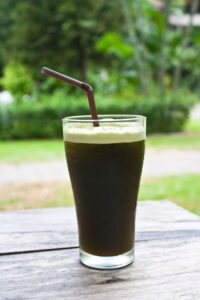
For best results, patients should consume a tincture such as this, as well as a wound healing tea, and complement these with topical application of Centella and other vulnerary herbs.
- Centella asiatica
- Calendula officinalis
- Curcuma longa
- Scutellaria bicailensis
Combine equal parts of tinctures of these herbs and take a teaspoon 4-5 times a day immediately following any wound, trauma, or injury.
Herbal Tea
This tea would be fairly bland flavored, so any desired flavor enhancers may be chosen; mint is used in this example.
· Centella asiatica 4 ounces
· Equisetum arvense 4 ounces
· Mentha piperata 4 ounces
· Calendula officinalis 2 ounces
· Astragalus membranaceus 2 ounces
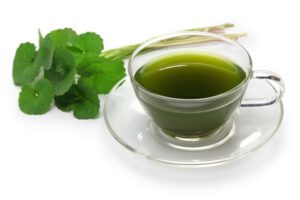
Combine the herbs in a large bowl or clean plastic bag and mix well. Prepare by gently simmering 3 heaping tablespoons in 10 cups of water. Simmer on the lowest possible setting for 5 minutes, then remove from the heat and let stand, covered, for another 10 minutes. Strain and drink the full amount over the day. The remaining mixture can be stored in a glass jar or a ziplock bag. Continue for 3 to 14 days, depending on the severity of the injury, preparing fresh each day.
Topical Poultice
Those prone to keloids may be able to prevent them by treating wounds promptly. This poultice would complement the above tea and tincture.
- Allium cepa 1 small fresh onion, coarsely chopped
- Curcuma longa 1 teaspoon of powdered herb
- Centella asiatica ½ cup of dried herb
- Aloe vera 2 tablespoons of gel
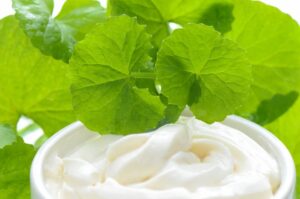
Pour 1 cup of hot water over dried Centella in a small pan or bowl, and add 1 tablespoon of vinegar to enhance the extraction of the asiaticosides. Let this stand while coarsely chopping an onion and placing the pieces in a high speed blender. Add the Curcuma powder and Aloe gel to the blender, and finally the Centella, along with the steeping water and vinegar. Blend into a homogenous puree, and transfer to a small bowl. Spread a portion of the puree between two thin pieces of muslin, cotton fabric, or bandaging material, and apply to the affected area. Leave in place for at least 20 minutes, and repeat every few hours throughout the day.
References:
- Jumper N, Hodgkinson T, Paus R, et al. Site-specific gene expression profiling as a novel strategy for unravelling keloid disease pathobiology. PLoS One. 2017; 12(3): e0172955.
- Torzecka J, Dziankowska-Bartkowiak B, Gerlicz-Kowalczuk Z, et al. The use of isotretinoin in low doses and unconventional treatment regimens in different types of acne: a literature review. Postepy Dermatol Alergol. 2017; 34(1): 1–5.
- Echeverría C, Diaz A, Suarez B, et al. Keloids, spontaneous or after minor skin injury: Importance of not missing Bethlem myopathy. Acta Derm Venereol. 2017; 97(2): 297–298.
- Campbell J,Alzubaidi R. Understanding the cellular basis and pathophysiology of Peyronie’s disease to optimize treatment for erectile dysfunction. Transl Androl Urol. 2017; 6(1): 46–59.
- Liu D, Gong L, Zhu H, et al. Curcumin inhibits transforming growth factor β induced differentiation of mouse lung fibroblasts to myofibroblasts. Front Pharmacol. 2016;7:419.
- Nakajima T, Imanishi M, Yamamoto K, et al. Inhibitory effect of baicalein, a flavonoid in Scutellaria Root, on eotaxin production by human dermal fibroblasts. Planta Med. 2001;67(2):132–135.
- Hosnuter M, Payasli C, Isikdemir A, Tekerekoglu B. The effects of onion extract on hypertrophic and keloid scars. J Wound Care. 2007;16(6):251–254.
- Gohil KJ, Patel JA, Gaijar AK. Pharmacological review on Centella asiatica: A potential herbal cure-all. Indian J Pharm Sci. 2010; 72(5): 546–556.
- Orhan IE. Centella asiatica (L.) Urban: From traditional medicine to modern medicine with neuroprotective potential. Evid Based Complement Alternat Med. 2012; 2012: 946259.
- Choi MJ, Zheng HM, Kim JM, et al. Protective effects of Centella asiatica leaf extract on dimethylnitrosamine-induced liver injury in rats. Mol Med Rep. 2016;14(5): 4521–4528.
- Meng XM, Zhang Y, Huang XR, et al. Treatment of renal fibrosis by rebalancing TGF-β/Smad signaling with the combination of asiatic acid and naringenin. Oncotarget. 2015;6(35):36984–36997.
- Lokanathan Y, Omar N, Ahmad Puzi NN, et al. Recent updates in neuroprotective and neuroregenerative potential of Centella asiatica. Malays J Med Sci. 2016; 23(1): 4–14.
- Li Z, Liu M, Wang H, Du S. Increased cutaneous wound healing effect of biodegradable liposomes containing madecassoside: preparation optimization, in vitro dermal permeation, and in vivo bioevaluation. Int J Nanomedicine. 2016;11: 2995–3007.
- Wollina U, Abdel-Naser MB, Mani R. A review of the microcirculation in skin in patients with chronic venous insufficiency: the problem and the evidence available for therapeutic options. Int J Low Extrem Wounds. 2006;5(3):169–180.
- Cesarone MR, Incandela L, De Sanctis MT, et al. Evaluation of treatment of diabetic microangiopathy with total triterpenic fraction of Centella asiatica: a clinical prospective randomized trial with a microcirculatory model. Angiology. 2001;52 Suppl 2:S49–S54.
- Ming ZJ, Liu SZ, Cao L. Effect of total glucosides of Centella asiatica on antagonizing liver fibrosis induced by dimethylnitrosamine in rats. Zhongguo Zhong Xi Yi Jie He Za Zhi. 2004;24(8):731–734.
- Tanaka H, Yamaba H, Kosugi N, Mizutani H, Nakata S. Fermentable metabolite of Zymomonas mobilis controls collagen reduction in photoaging skin by improving TGF-beta/Smad signaling suppression. Arch Dermatol Res. 2008;300 Suppl 1:S57–S64.
- Lee J, Jung E, Kim Y, et al. Asiaticoside induces human collagen I synthesis through TGFbeta receptor I kinase (TbetaRI kinase)-independent Smad signaling Planta Med. 2006;72(4):324–328.
- Lu L, Ying K, Wei S, et al. Asiaticoside induction for cell-cycle progression, proliferation and collagen synthesis in human dermal fibroblasts.Int J Dermatol. 2004;43(11):801–807.
- Lu L, Ying K, Wei S, et al. Dermal fibroblast-associated gene induction by asiaticoside shown in vitro by DNA microarray analysis.Br J Dermatol. 2004;151(3):571–578.
- Saeidinia A, Keihanian F, Lashkari AP, et al. Partial-thickness burn wounds healing by topical treatment. A randomized controlled comparison between silver sulfadiazine and centiderm. Medicine (Baltimore). 2017; 96(9): e6168.
- Hou Q, Li M, Lu YH, et al. Burn wound healing properties of asiaticoside and madecassoside Exp Ther Med. 2016;12(3): 1269–1274.
 Jillian Stansbury, ND, has practiced in SW Washington for nearly 20 years, specializing in women’s health, mental health, and chronic disease. She holds undergraduate degrees in medical illustration and medical assisting, and graduated with honors in both programs. Dr Stansbury also chaired the botanical medicine program at NCNM and has taught the core botanical curricula for more than 20 years. She also writes and serves as a medical editor for numerous professional journals and lay publications, and teaches natural products chemistry and herbal medicine around the country. She is presently working to set up a humanitarian service organization in Peru and is studying South American ethnobotany. She is the mother of 2 adult children, and enjoys art, music, gardening, camping, international travel, and the study of quantum and metaphysics.
Jillian Stansbury, ND, has practiced in SW Washington for nearly 20 years, specializing in women’s health, mental health, and chronic disease. She holds undergraduate degrees in medical illustration and medical assisting, and graduated with honors in both programs. Dr Stansbury also chaired the botanical medicine program at NCNM and has taught the core botanical curricula for more than 20 years. She also writes and serves as a medical editor for numerous professional journals and lay publications, and teaches natural products chemistry and herbal medicine around the country. She is presently working to set up a humanitarian service organization in Peru and is studying South American ethnobotany. She is the mother of 2 adult children, and enjoys art, music, gardening, camping, international travel, and the study of quantum and metaphysics.









